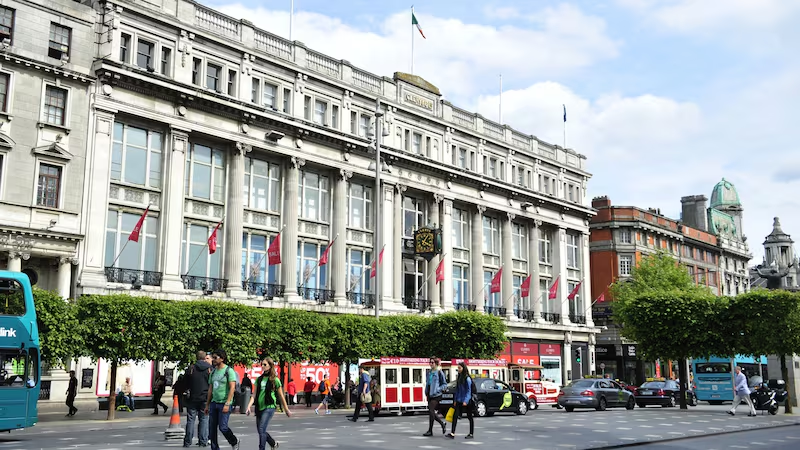The penny has dropped. For a long time it has been quite clear that Dublin’s nightlife was being dismantled, that cultural and creative spaces were being pushed out of the city, that artists were leaving, that nightclubs were literally being demolished and that the only easy way to get ahead in the city was to be a big international brand – be that a fund pouring money into high-end student accommodation or a large hotel company.
The deeper the pockets, the blander the enterprise. Areas with long-standing communities and places of unique character, such as the Liberties, are being swarmed by incongruous tourist-focused development and student accommodation that so few young people in Ireland can afford. Demolition is happening on a discombobulating level. The focus is on tourism and transience, not building a smart, sustainable city that celebrates its best characteristics. The ironies abound, including the city being in thrall to tourism, yet erasing the very character in which tourists come here to steep themselves. There is no blueprint for the city, no plan. But if you thought 2019 was mad, bad and sad in Dublin, get ready for 2020.
The student accommodation trend is a money game
The canaries in the coal mine have been screeching for some time. The eradication of the city’s character will not begin and end with artistic and creative concerns being sidelined. This shift will come from everybody, including independent businesses that are already feeling the pressure of rocketing rents, landlords waiting for a bigger pay cheque to come along from someone else, and the tyranny of insecurity, making passion projects, labours of love, and businesses with heart just too stressful and unsustainable for many. The big brands and international chains are going to triumph, and your favourite spots will continue to shut up shop unless protections are put in place.
Boiling over
A city is all about a mix, all about a balance. It’s about serving the many people who exist in it. Dublin is losing that, rapidly. Speaking to a PBS colleague in the US last week, she inquired about Dublin’s gentrification, and I explained that while larger cities can hold back the tide somewhat, or subsume certain levels of second-phase gentrification due to their scale without irreparably changing the character of a place, Dublin city centre, which is so small, could not.
In turn, she used the metaphor of two pots of water being heated at the same temperature on the same stove. A big city is a bigger pot, so it’ll take a while for it to boil and will mostly simmer away. But a much smaller city, such as Dublin, represents a tiny pot of water, so when you expose it to that same heat, it’s going to start boiling almost instantly. We are a smaller pot, and there are no interventions stopping us from boiling, no cold water being thrown in, things to cool the temperature of gentrification down.
The student accommodation trend is a money game. Instead of building flats and apartments that are affordable to rent for anyone, housing has become siloed, with what is known as the golden goose of contemporary housing-type development flying up around the city, while the building of “real” housing is painfully slow. The number of international students coming to Ireland increased a remarkable 45 per cent between 2013 and 2017. This is a revenue-maker for third-level institutions. Seventy-nine per cent of people living in purpose-built student accommodation in Dublin city centre are international students. The building of this profit-squeezing temporary housing does not alleviate the student housing crisis in any considerable way, it’s just adding a new demographic to the city and making them pay through the nose.
Generic offerings
The dominance of hotels and large, generic food offerings in the city is pronounced. But if you’re feeling it now, brace yourself. When you start to list the things opening or having just opened – even off the top of your head – you realise it’s hard to stop. The Central Plaza will change the Dame Street area in a major way. It’s a huge development (WeWork is the anchor tenant, surprise surprise), with 35,200sq ft of retail space, 16,000sq ft of food and beverage space, and an additional 15,500sq ft rooftop venue. Across the Liffey, Clerys Quarter on O’Connell Street will have more retail space, The Clery hotel (Press Up), more food and beverage stuff with Earl Place Market, and yes, another rooftop bar and restaurant.

I’ve lost track of the number of hotels being built or opening in the north inner city: parts of Smithfield simply being razed, the site at the back of Yamamori, planning permission sought for a hotel on Benburb Street, a hotel on Bolton Street, the large hotel being built on Ormond Quay, and so on. Most of these will have bars and restaurants that will be seeking to pull in more than just their guests. On the southside there’s The Marlin, The Mayson, The Grafton, the numerous hotels being built in the George’s Street area, including a large Premier Inn on the corner of Stephen’s Street. There’s the massive Wetherspoon hotel on Camden Street, another hotel in Portobello by the Lower Deck pub, the huge Hard Rock Hotel on Dame Street, Aloft hotel recently opened in the Tenters (where you can order food by using emojis). There’s the expansion of the Central Hotel, and right beside that Press Up wants to turn Odessa into a boutique hotel. This is just some of the stuff in a couple of square kilometres in the city centre, without even getting into the developments in Dublin 8 and on the fringes of the city centre.
This cycle is advanced. What we need to examine now is how to retain even small parts of Dublin’s character, and implement some kind of system whereby spaces with value beyond the monetary can not be threatened wholesale.












